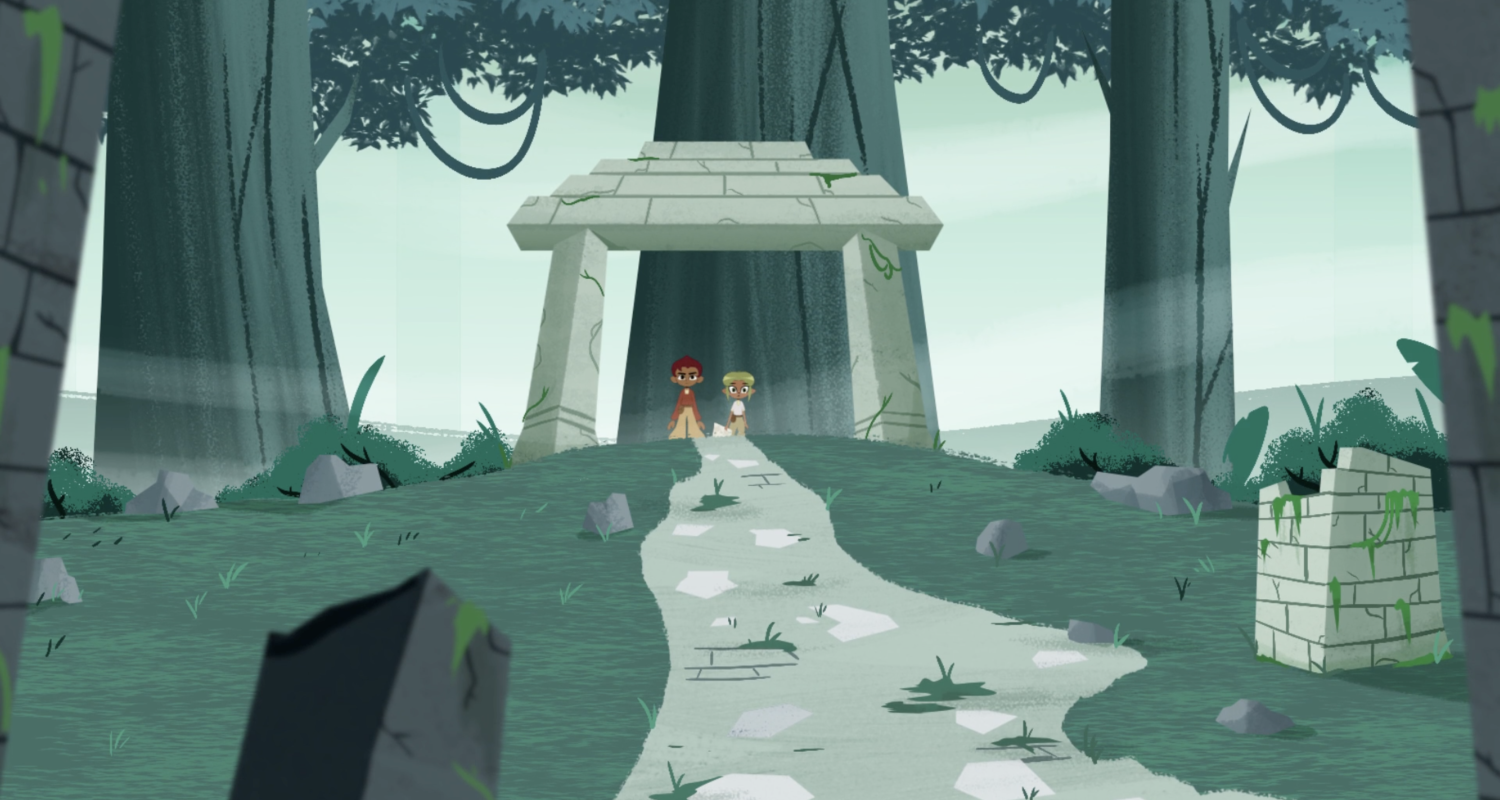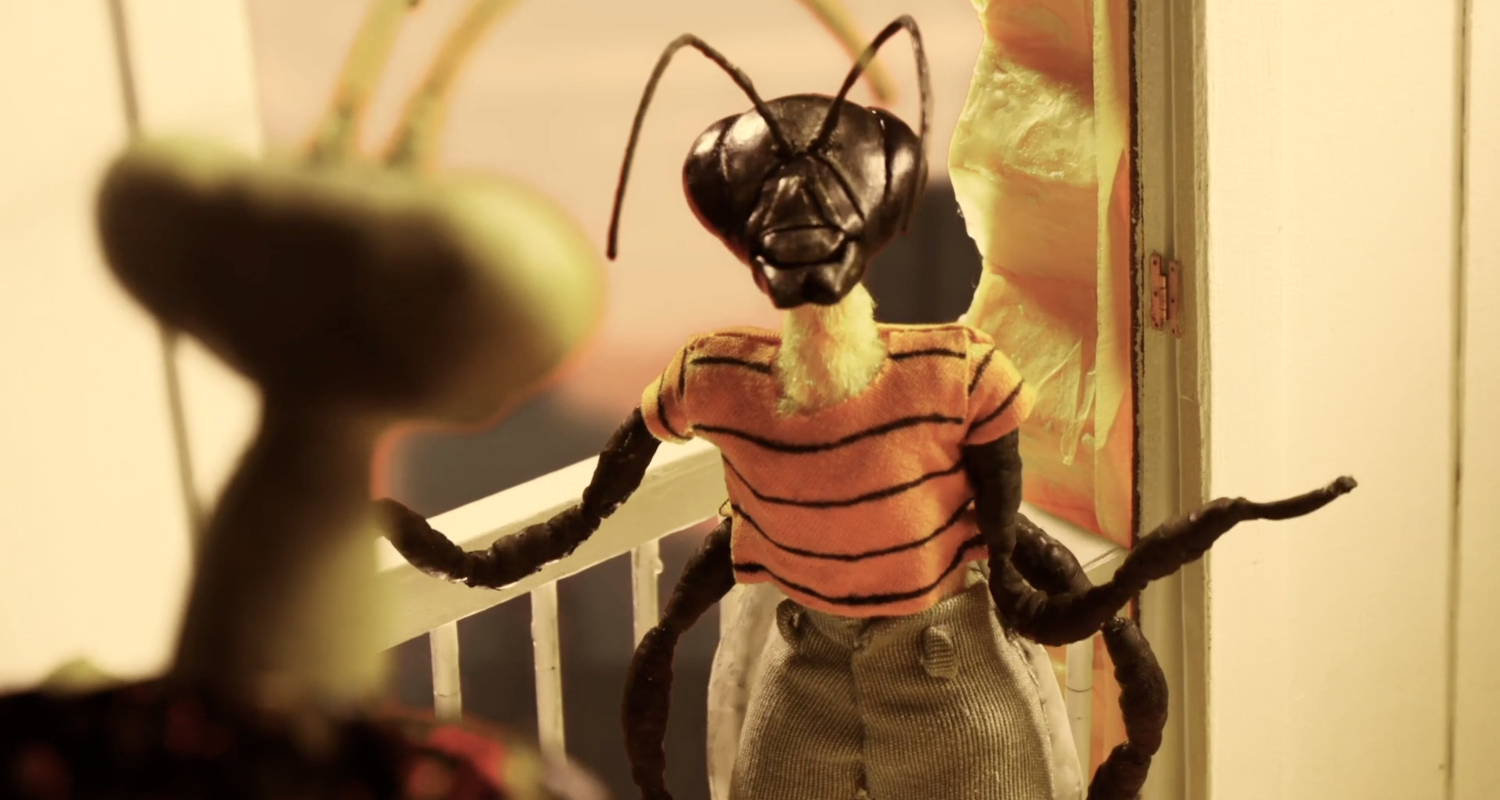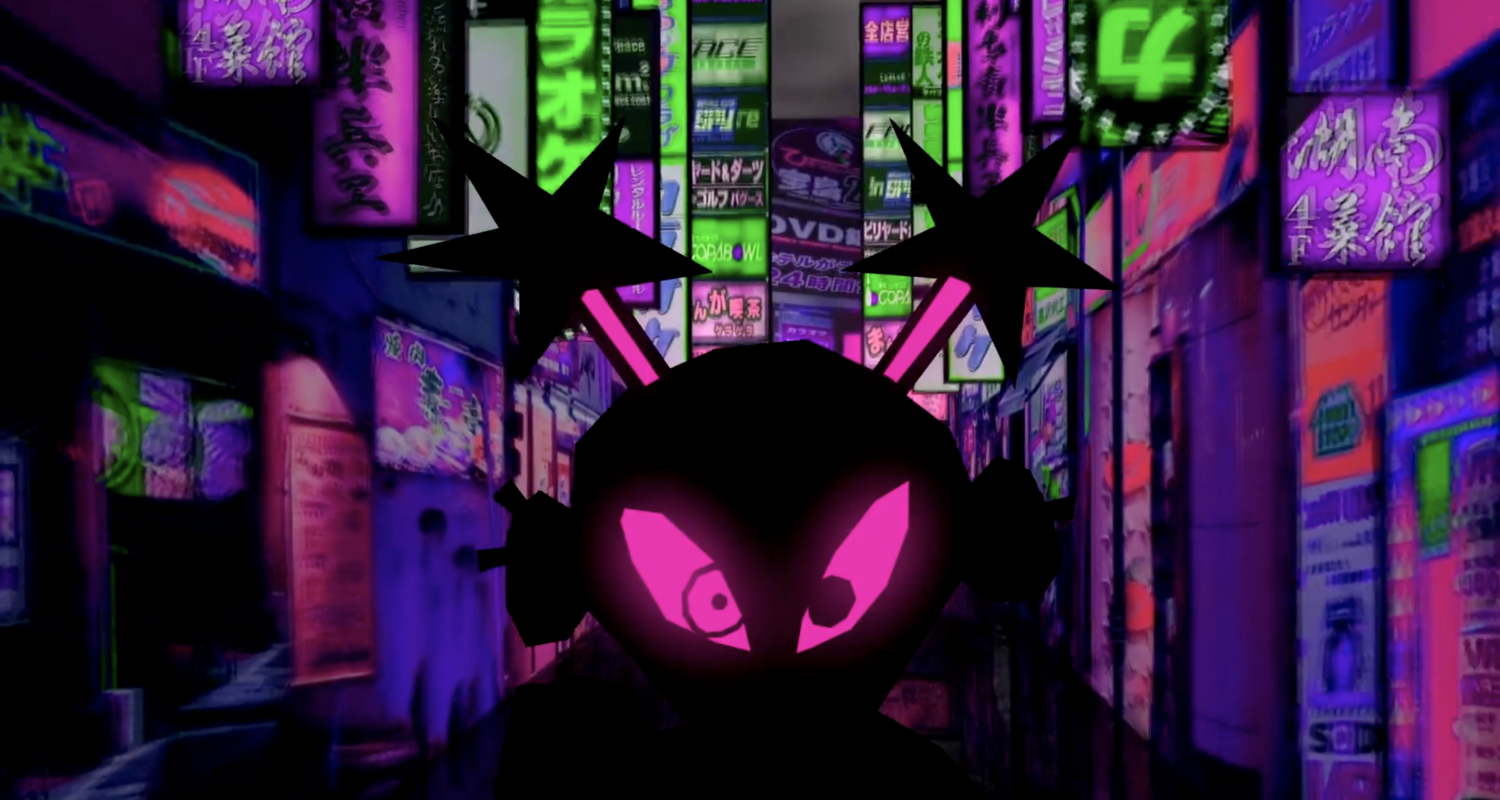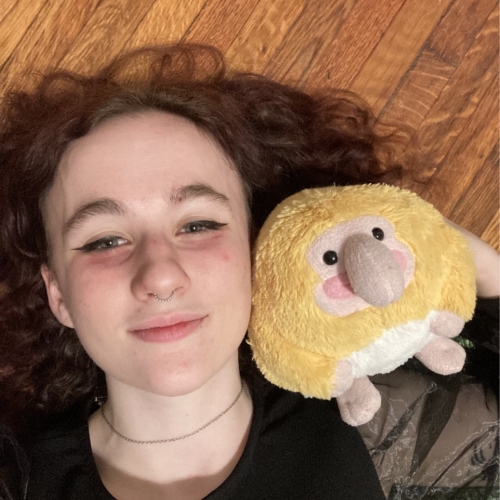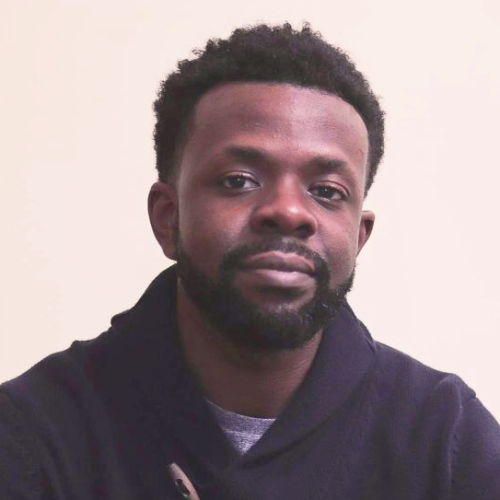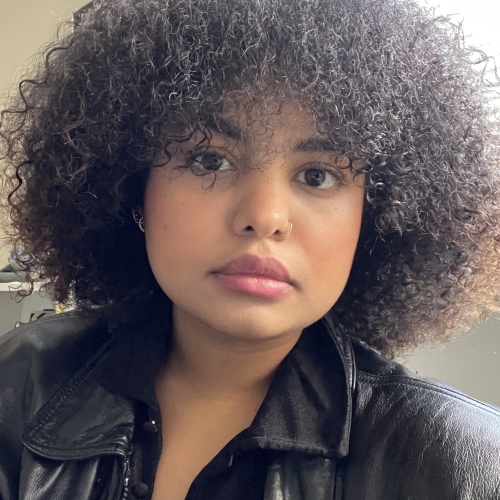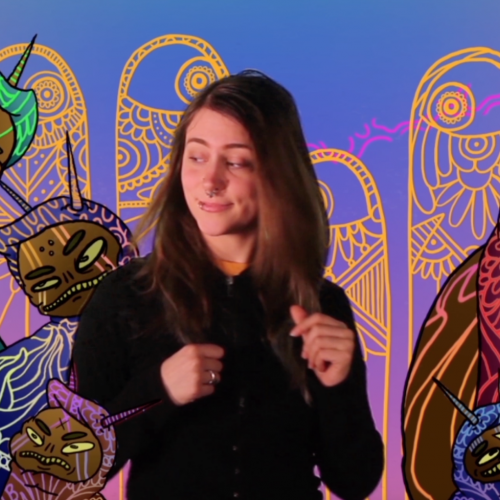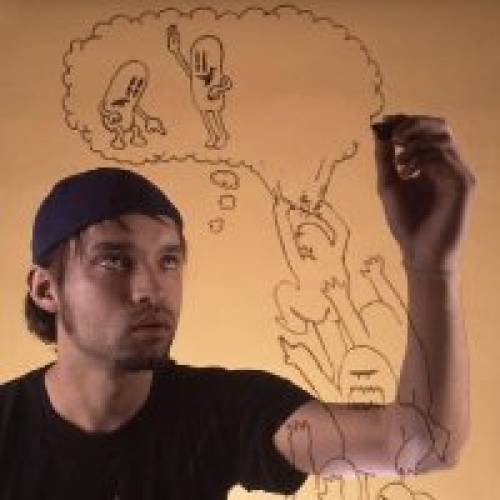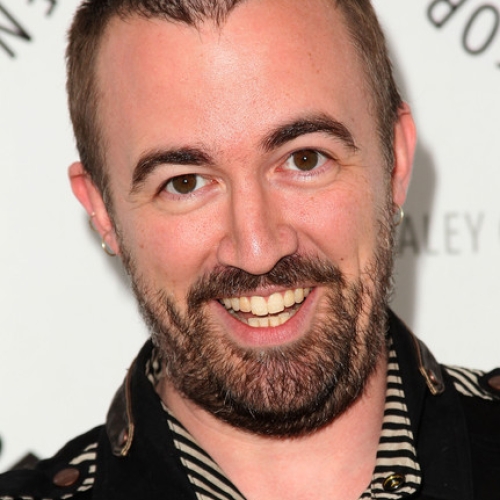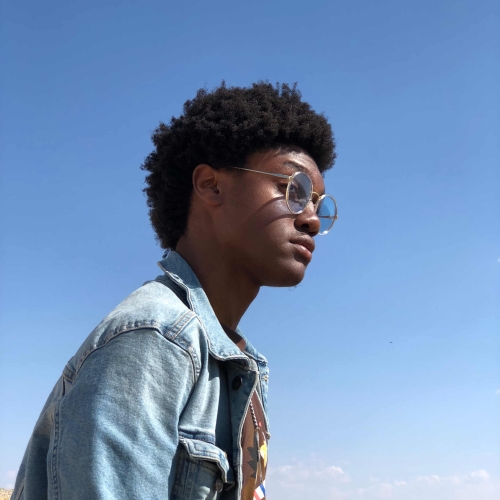Animation (BFA)
Animation BFA Degree
The Bachelor of Fine Arts in Animation degree program at University of the Arts is the place for curious, motivated students to build a solid foundation for a lifetime of expression, work, study, and play in the animated arts and beyond.
In this undergraduate degree program, you will study practical foundational techniques and methods essential for both a career as an independent director/filmmaker or as a specialized artist at an animation production studio.
You will demonstrate your narrative or experimental, 2D, 3D, stop motion, or hybrid filmmaking skills with three opportunities to make an original short film: your Sophomore Piece, Junior Piece, and Senior Thesis. Juniors and Seniors in this degree program may choose to produce films as group projects.
You will expand your knowledge of animation’s history which will inform the development of your aesthetic breadth and depth. You will transcend your comfort zone by participating in projects in which you’ll collaborate with musicians, dancers, actors, and other artists.
You will hone your professional skills (and add to your resume) during your internship or group production of animated work for a real-world client in Client Animation class.
You'll meet with industry professionals and gain real-world experiences and insights through guest lectures from visiting artists and through classroom and studio trips in Philadelphia and New York City.
On our annual Ottawa International Animation Festival and Los Angeles Experience trips, you will meet directors, recruiters, and other artists from around the globe.
Finally; you will be challenged to continuously evolve as the unique animation artist that you are, as you work in a dynamic medium to tell the stories you feel passionate about and express your personal vision.
Learning from Exceptional Faculty
Working closely with an accomplished faculty of professional filmmakers and animators—whose work has screened in festivals internationally and aired on networks and channels such as Cartoon Network, HBO, Comedy Central, IFC, Netflix and Nickelodeon—you’ll take animation classes that are a mixture of hands-on instruction, lectures, screenings and critiques. Taking an internship or choosing to study abroad for a semester are additional ways to broaden your experience. When you graduate, you’ll do so with the skills to confidently pursue a career in animation.

Your Focus Is Your Choice
In your first year as an Animation major you will take introductory courses in 2D, 3D, and stop motion animation, studying the principles of creating motion and performance while experiencing a variety of tools and techniques. At the beginning of your second year, you will be able to plan a 2D, 3D, stop motion, or hybrid focus path through the rest of the curriculum with your advisor.
Animation Program Accolades
UArts Animation measures up. In 2023, the Animation bachelor’s degree program at UArts was named in the top five animation schools in Pennsylvania, the top animation schools on the East Coast and the top animation schools in the U.S. by Animation Career Review.
Resources Available to Animation Students
Collaborative by design, our Animation bachelor’s degree program allows you to work with peers from different programs. You’ll get instruction across disciplines by taking courses in screenwriting, film, and illustration alongside your major courses. You’ll also be able to use UArts’ production and technology spaces, like the 5,600-square-foot Center for Immersive Media (CIM), animation and film studios, computer labs, and stop motion studios, among other cutting-edge spaces. Media Resources provides students with cameras, tripods, lights and other technology needed to succeed in coursework and beyond.
Animation Student Films
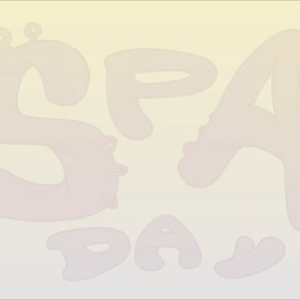
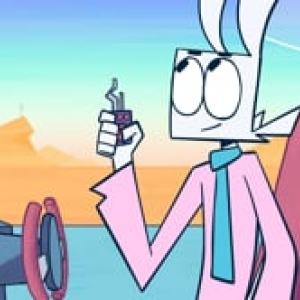
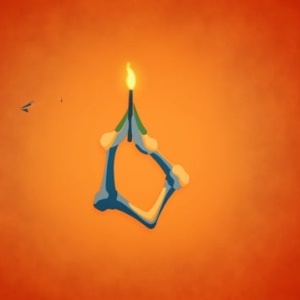
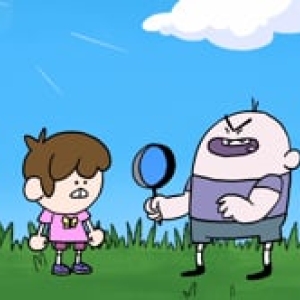
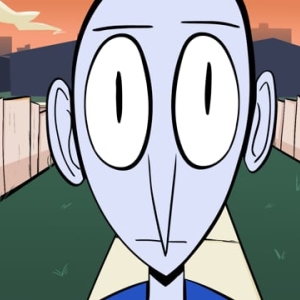

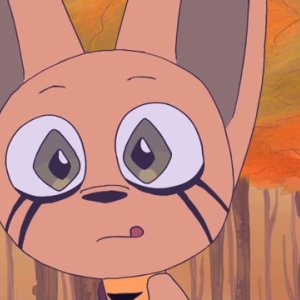
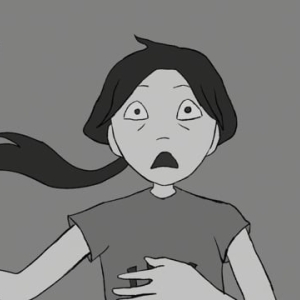

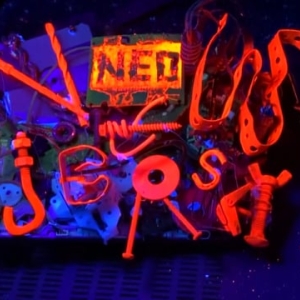

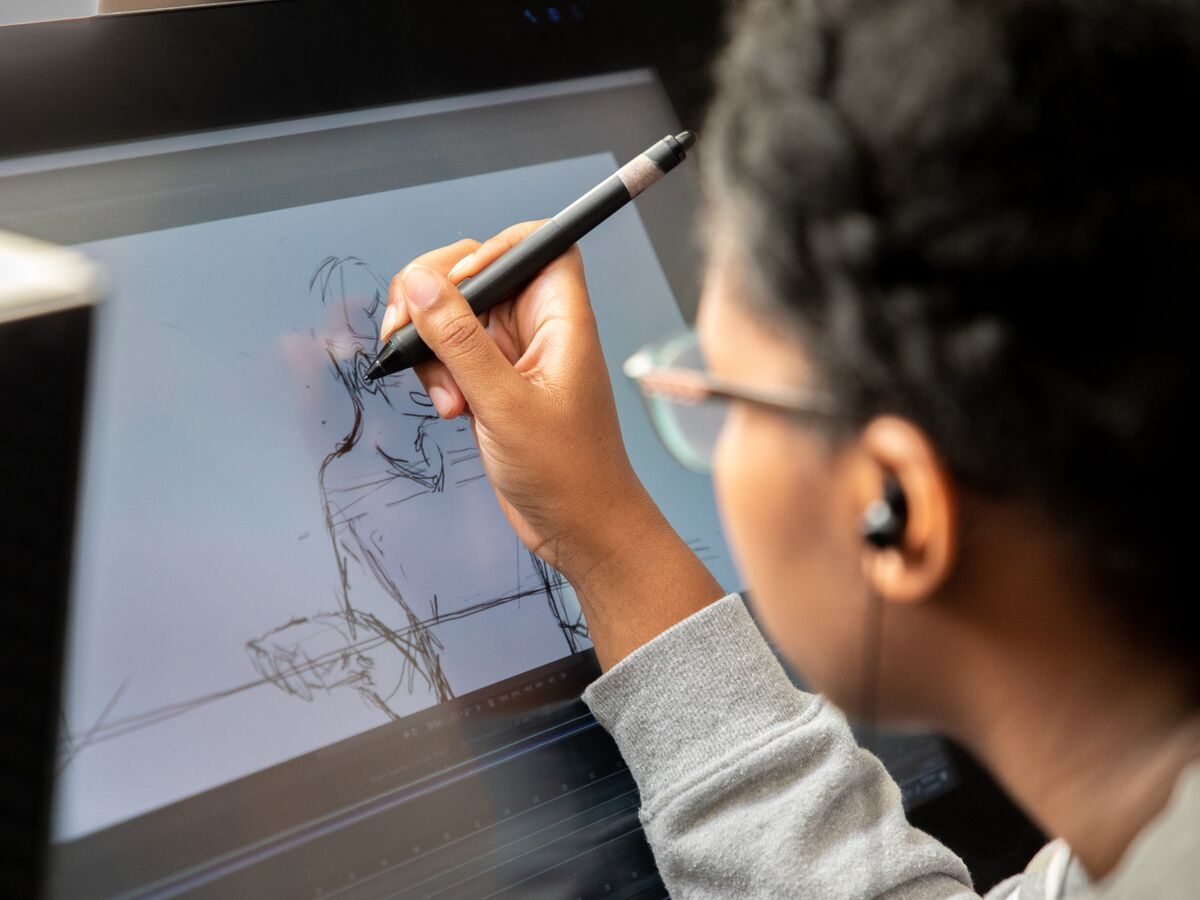

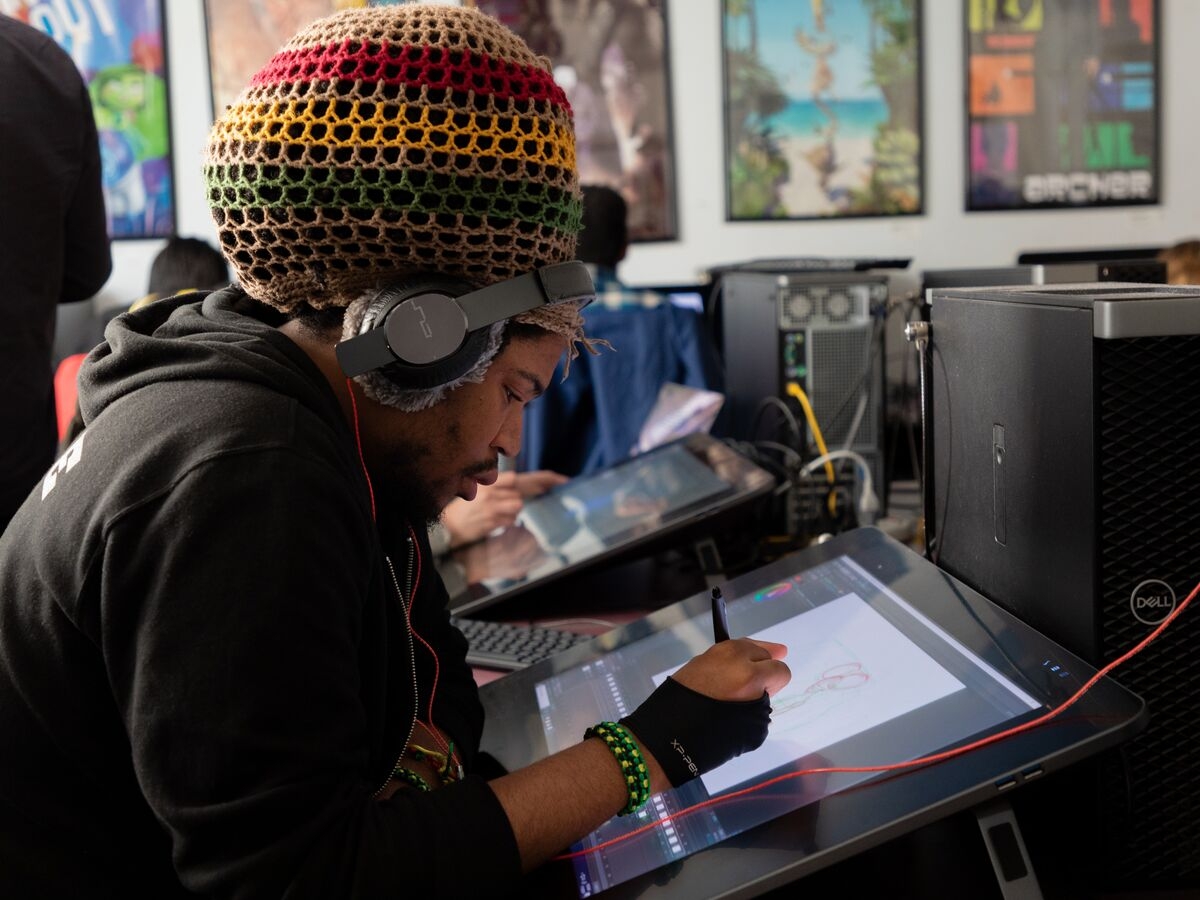
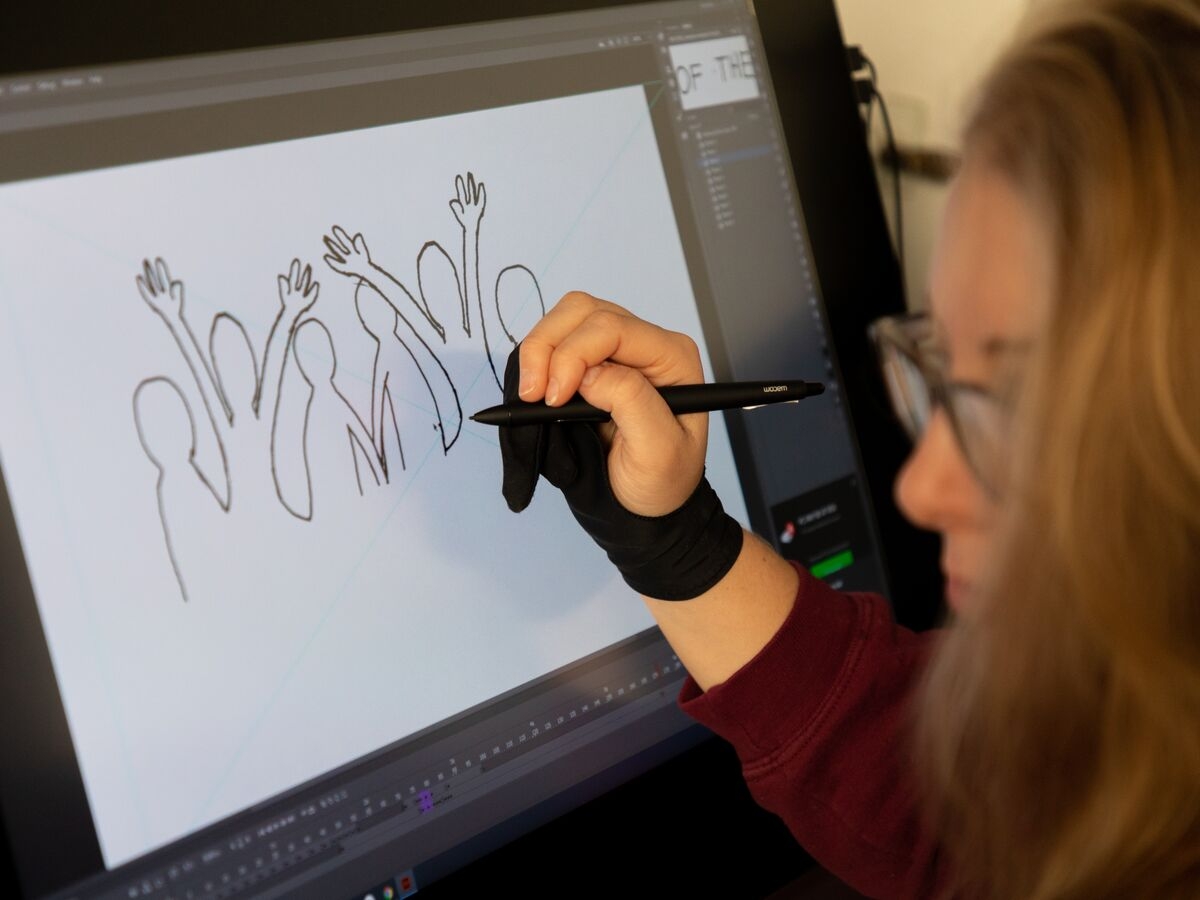
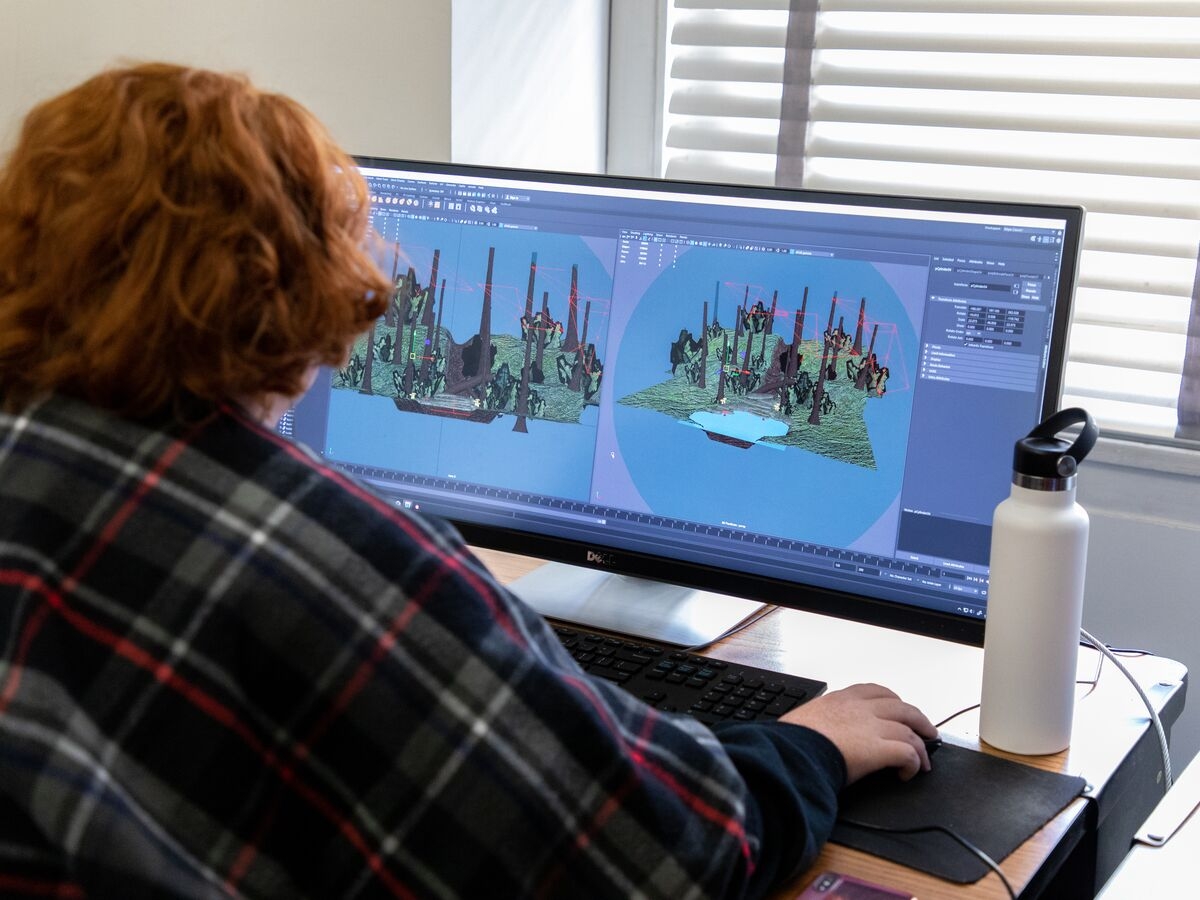
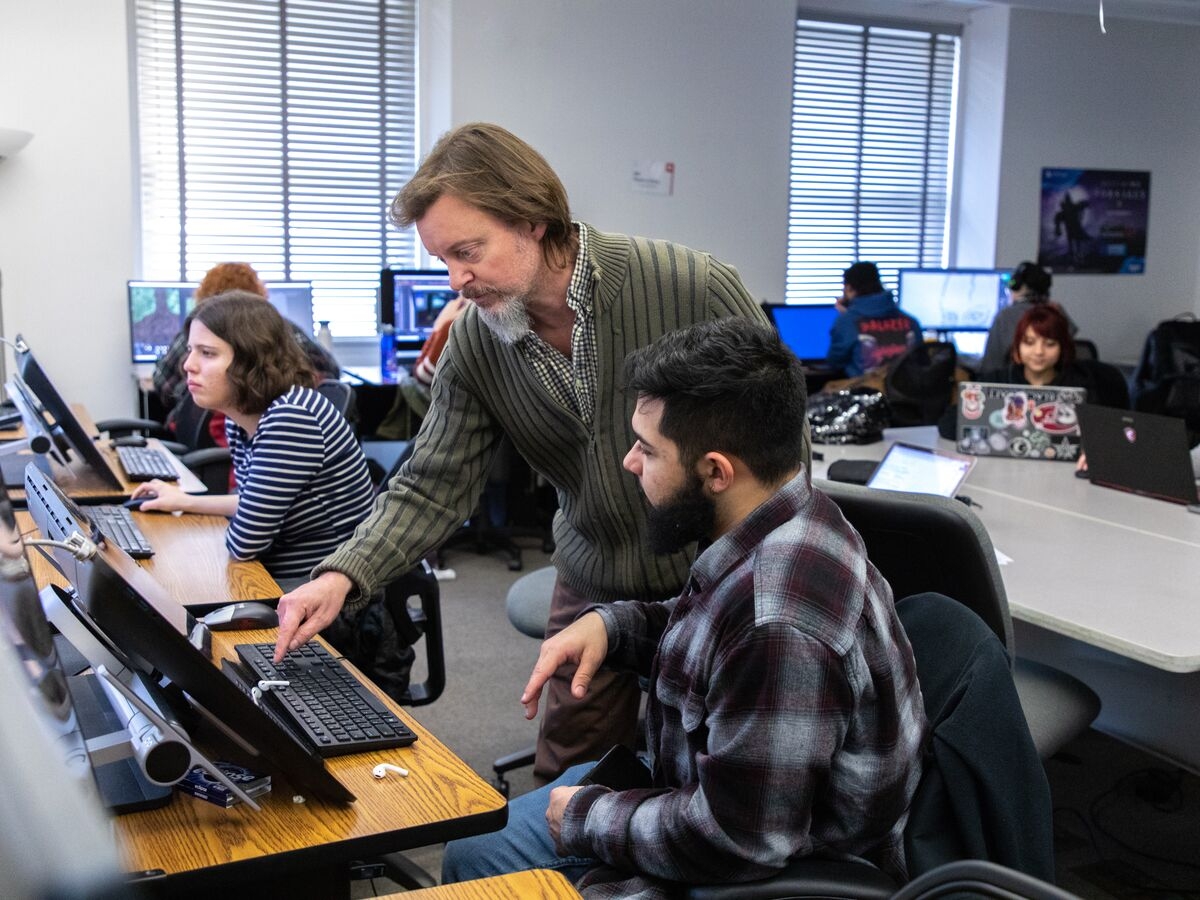
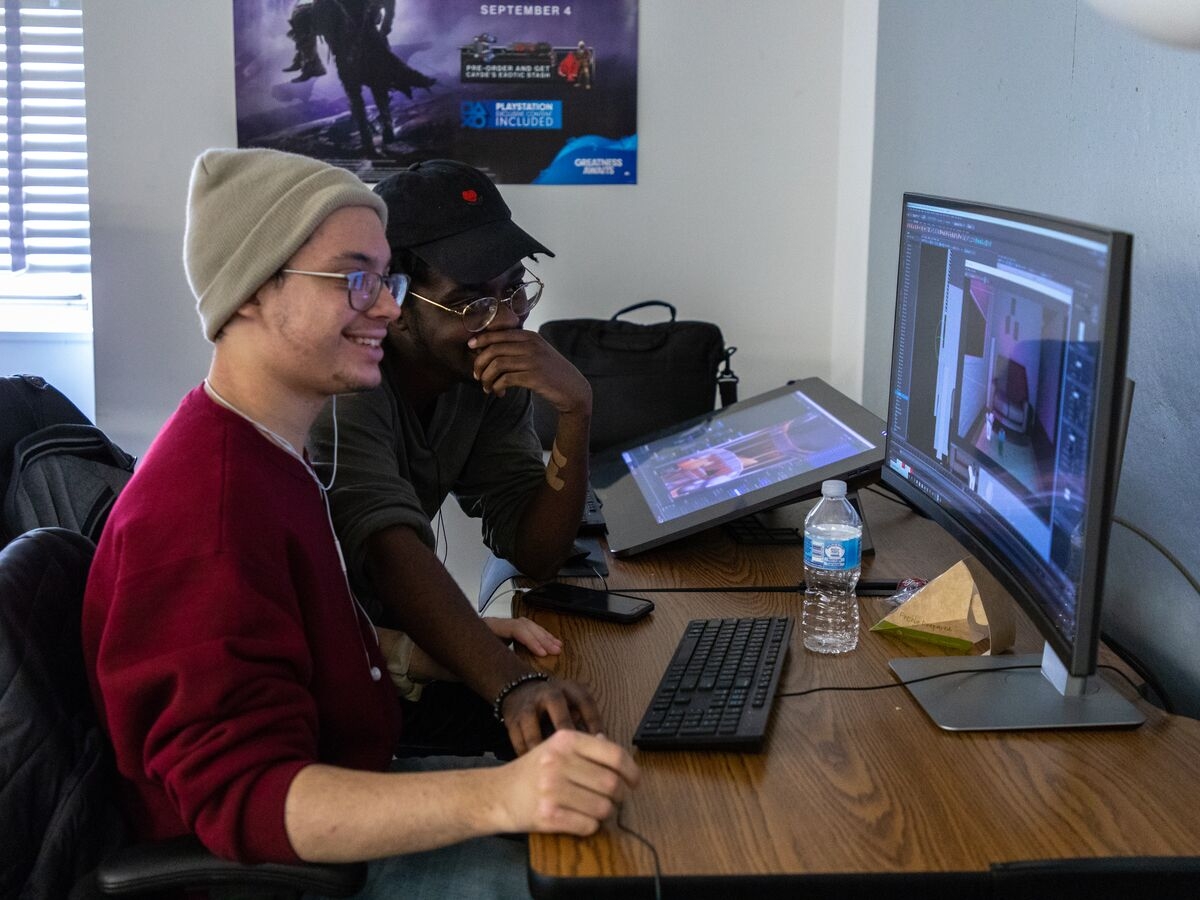
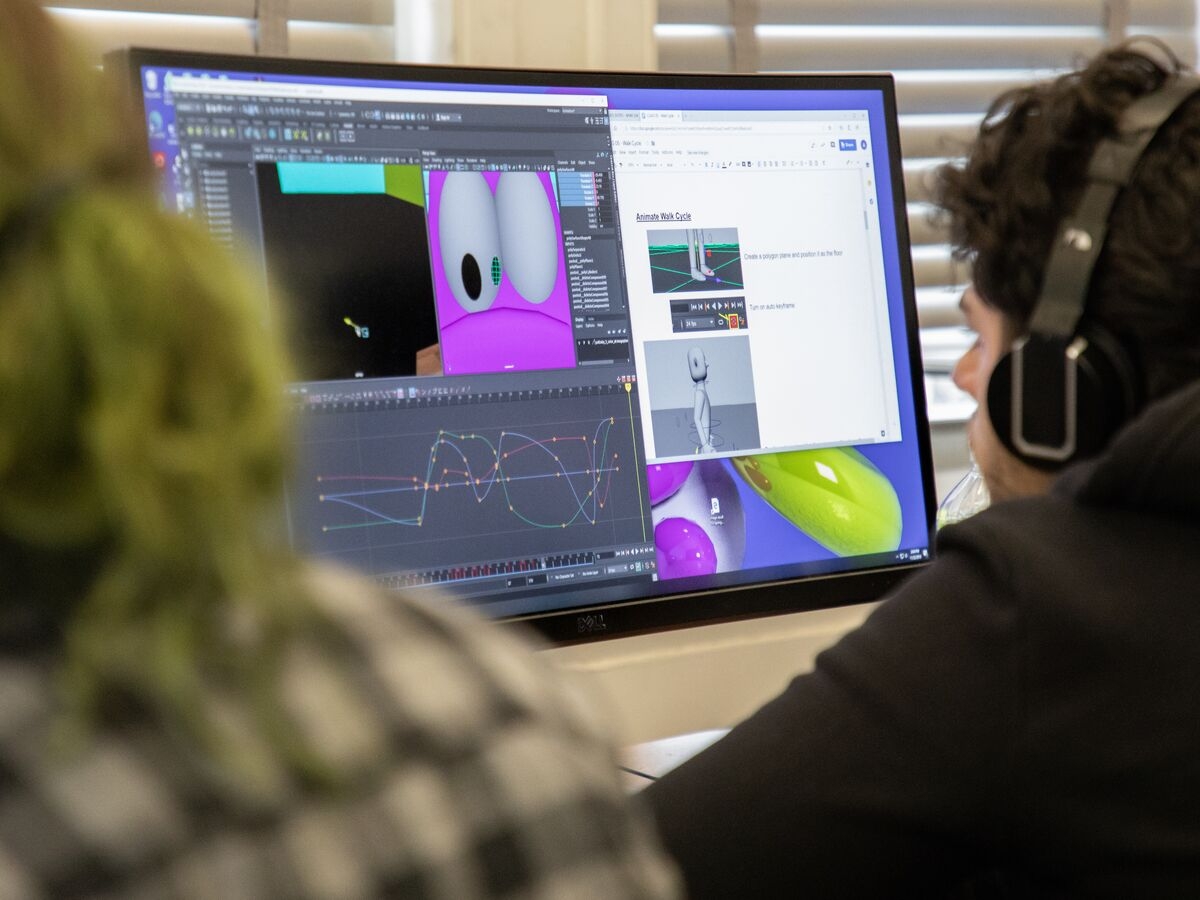
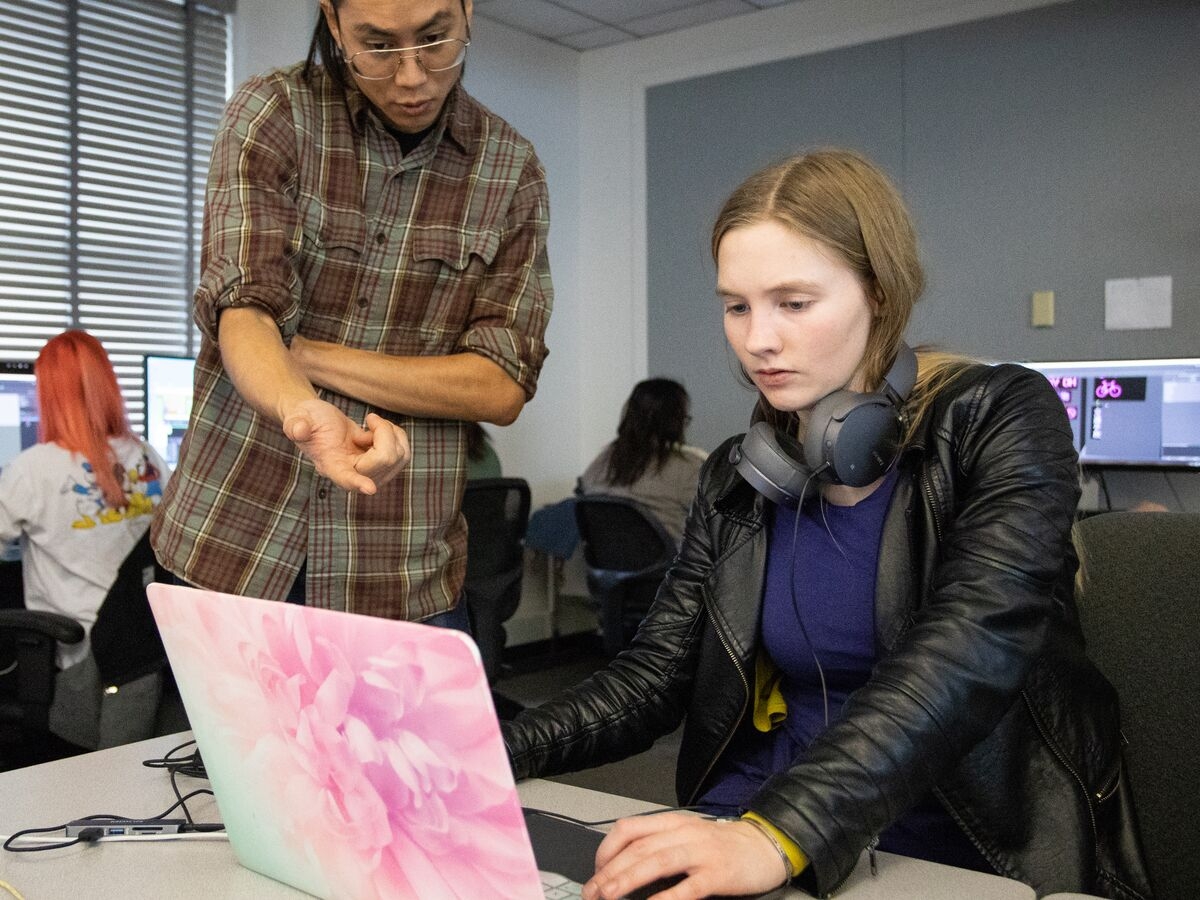
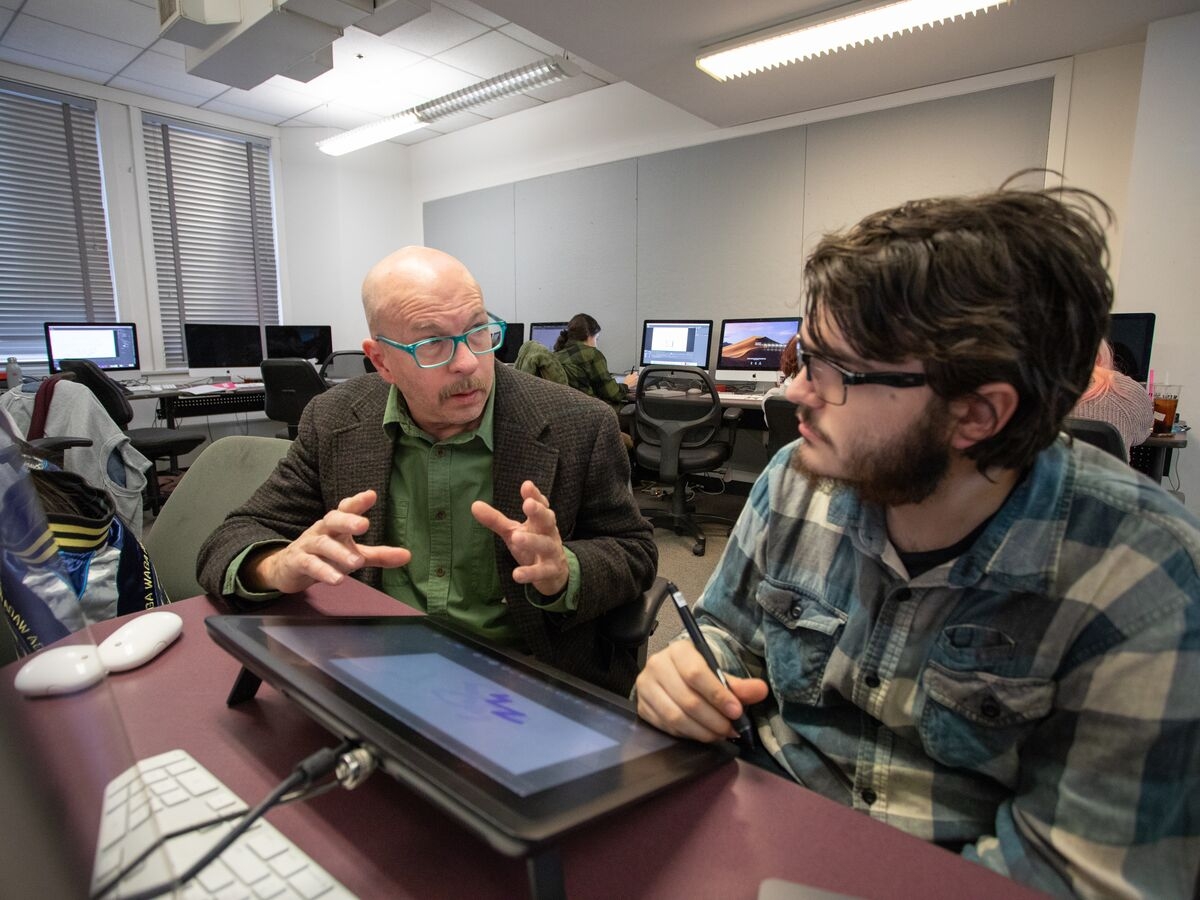
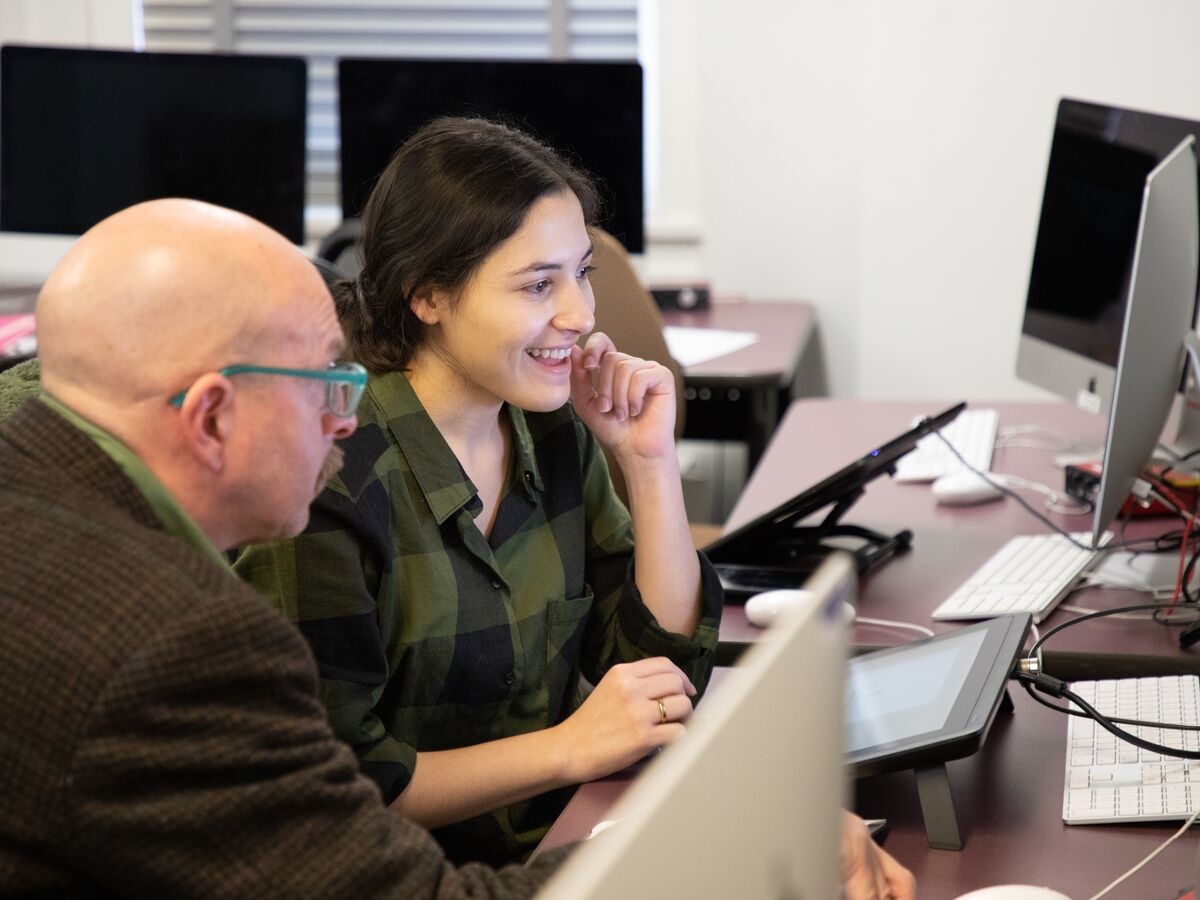
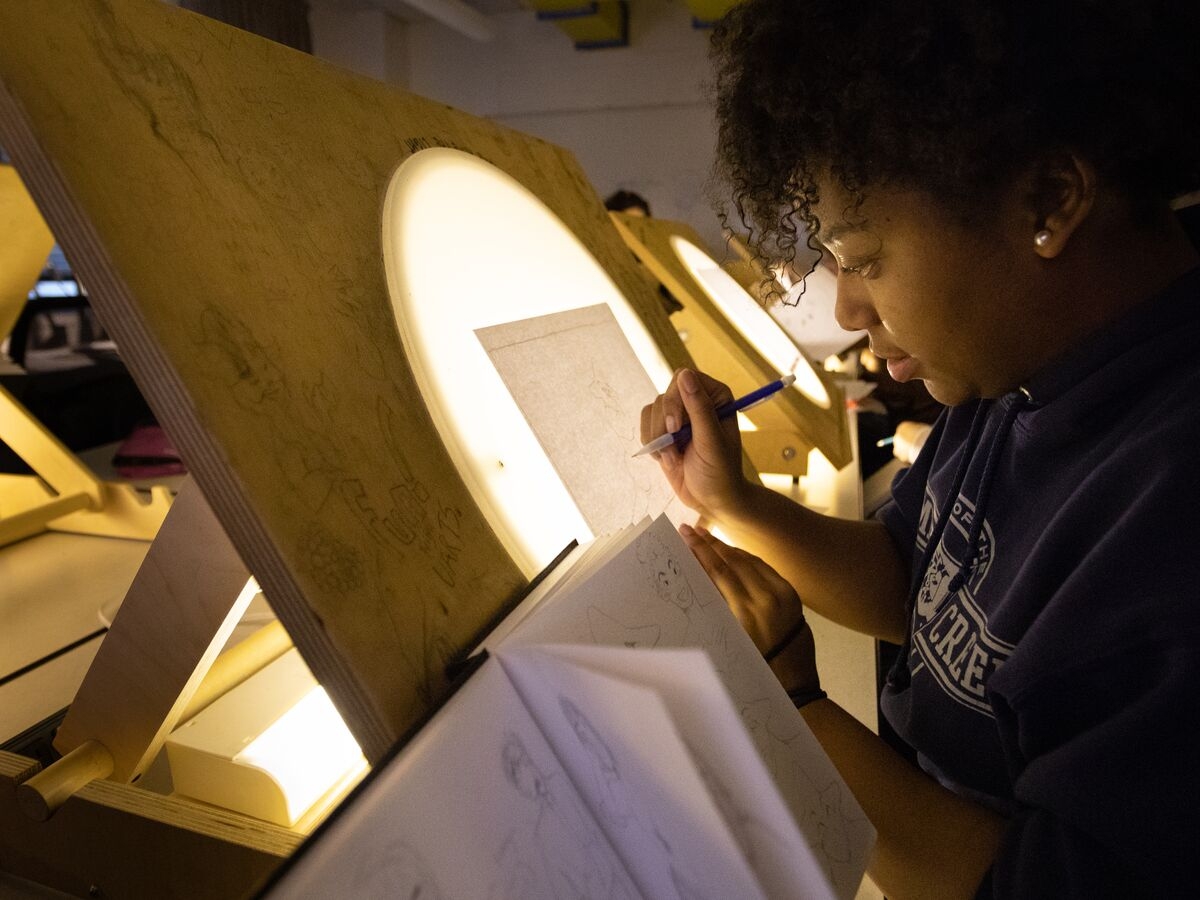
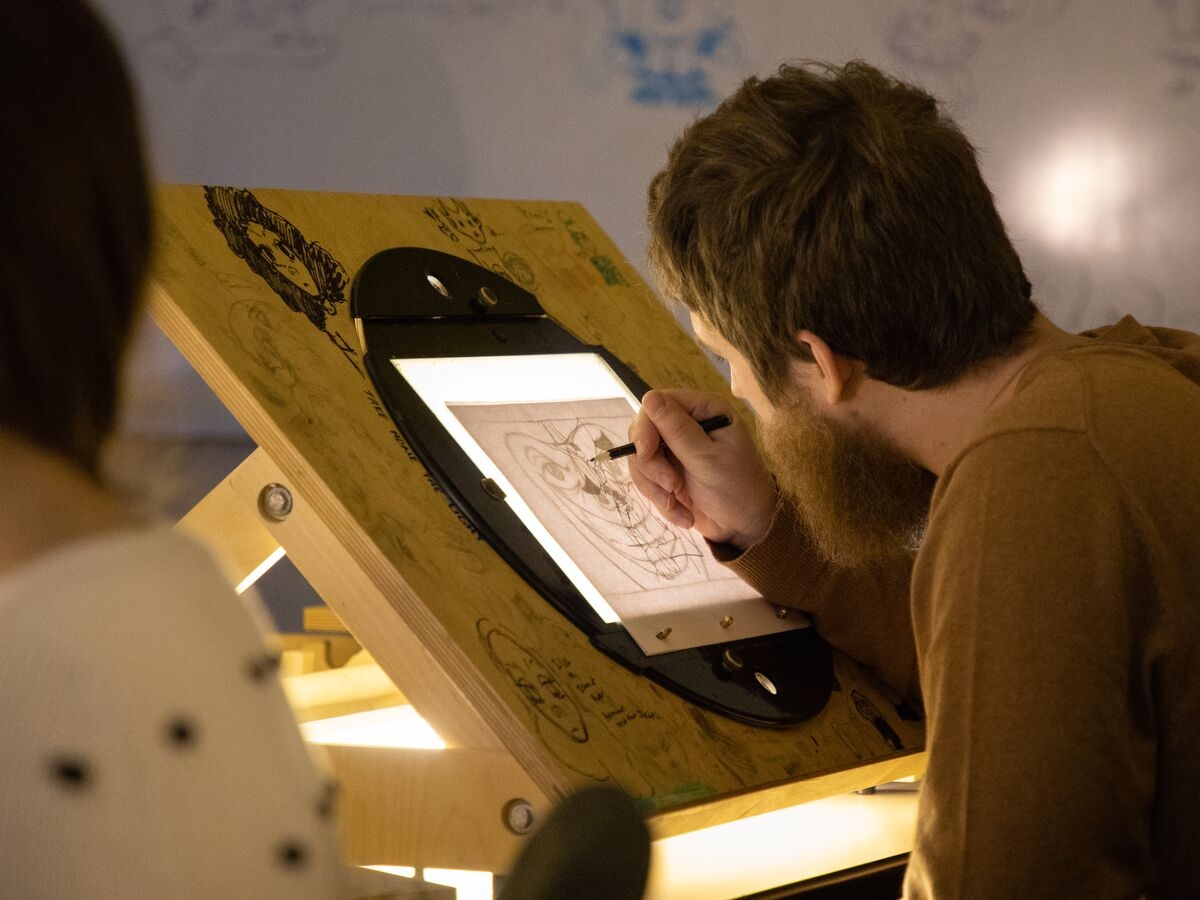
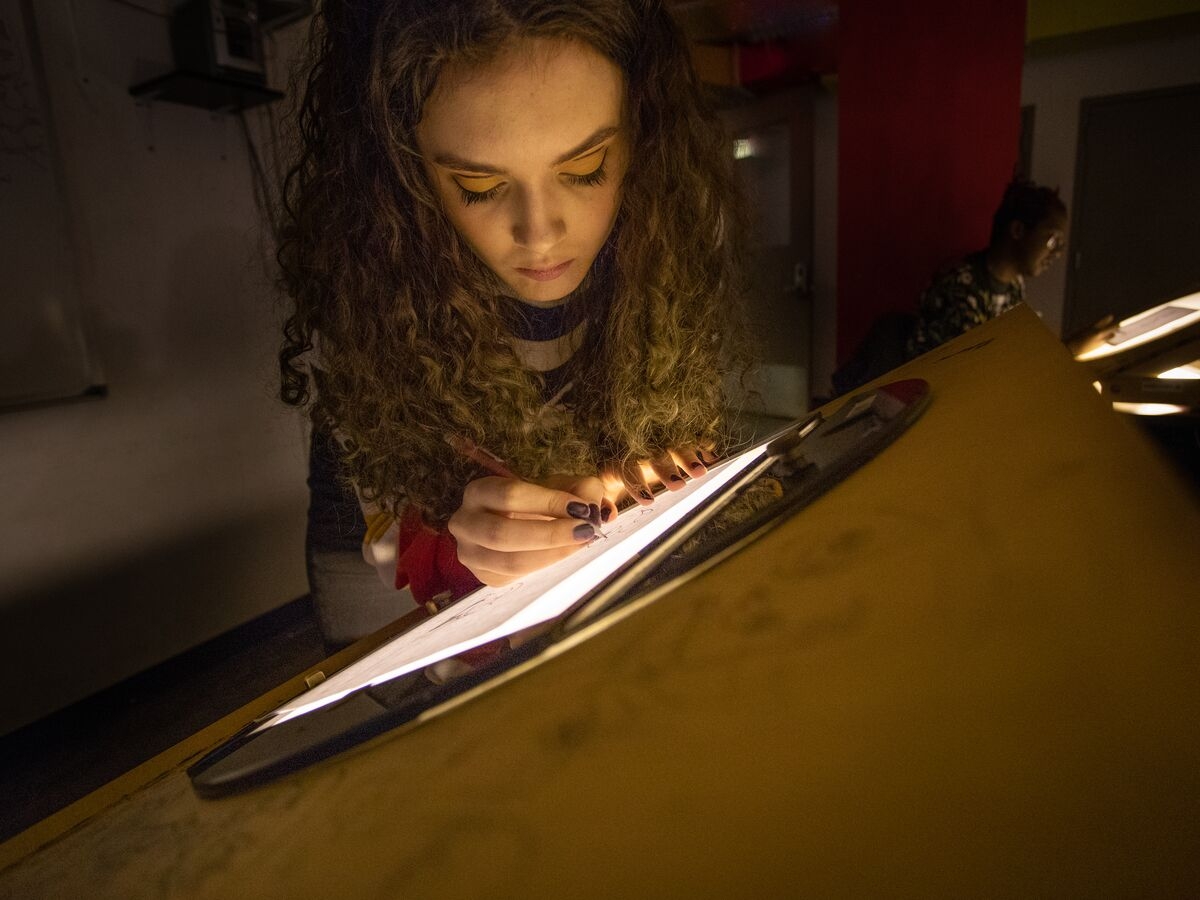
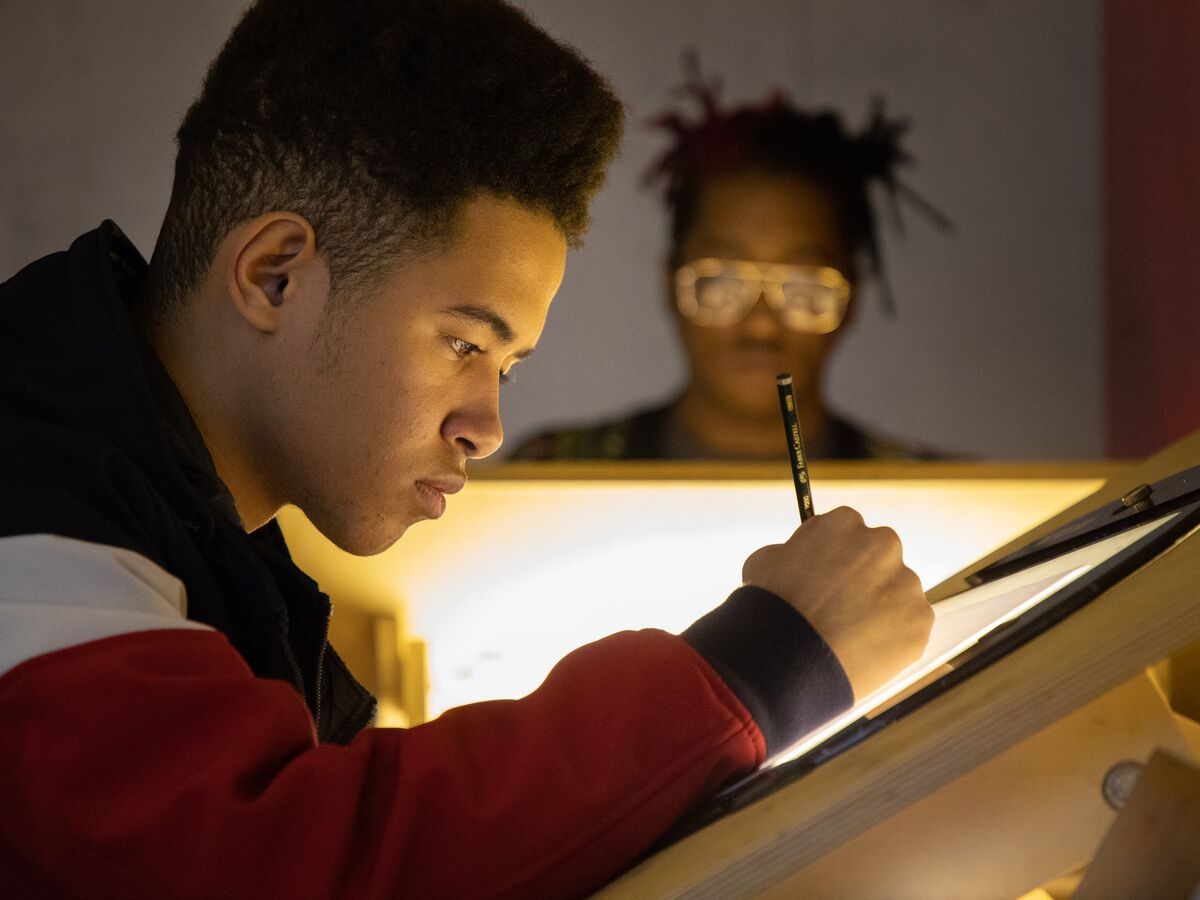
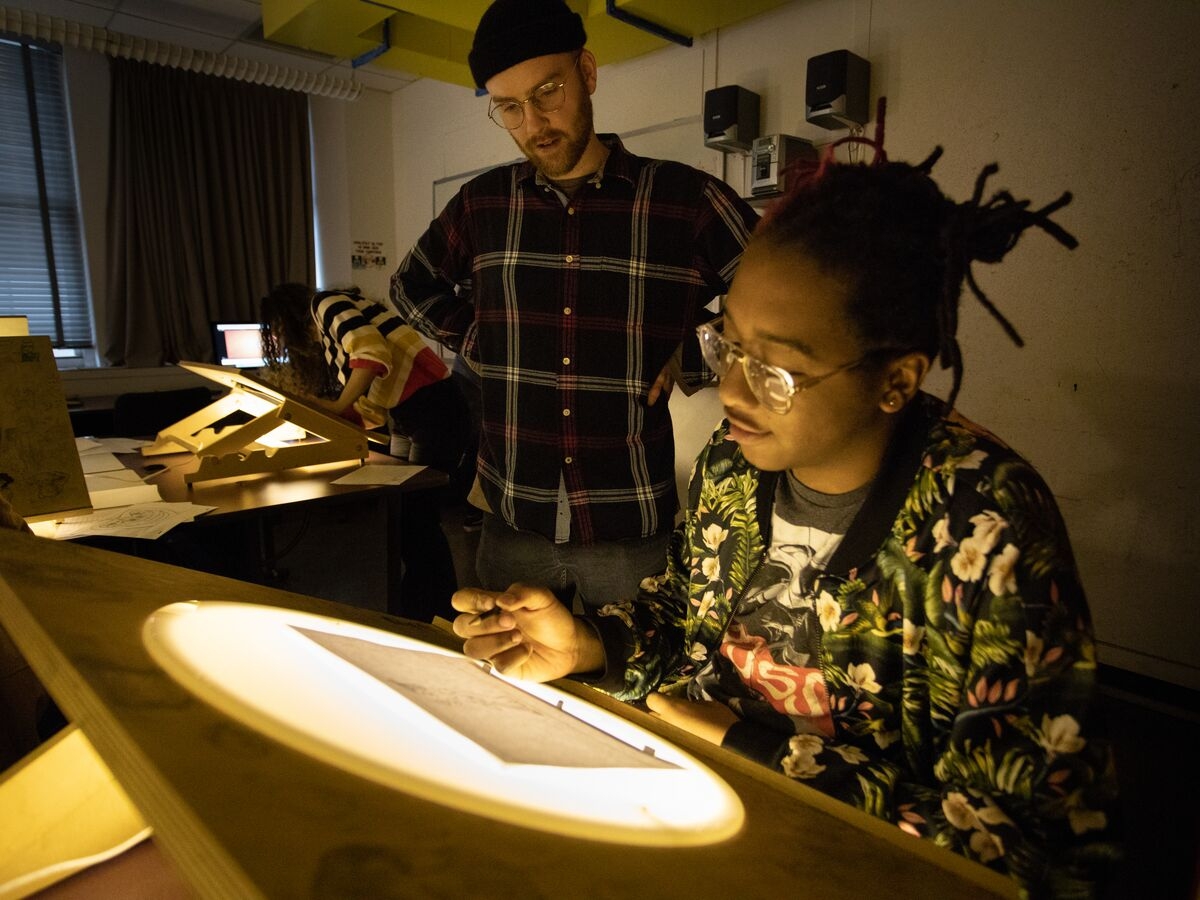
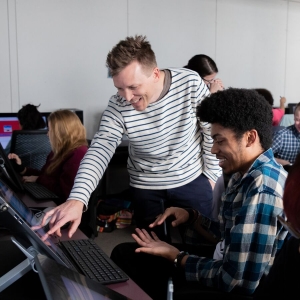
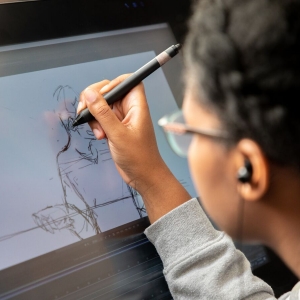
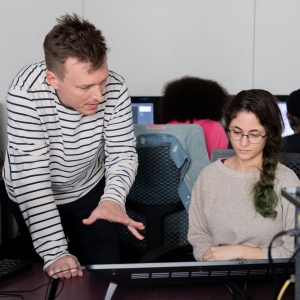
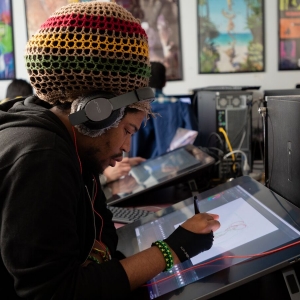
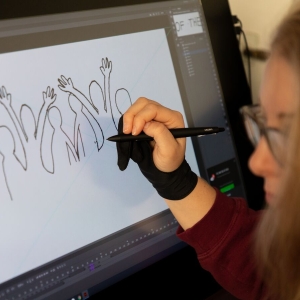
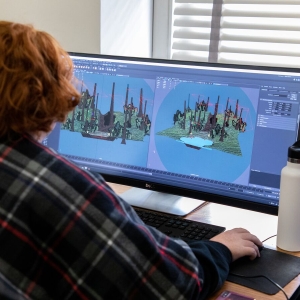
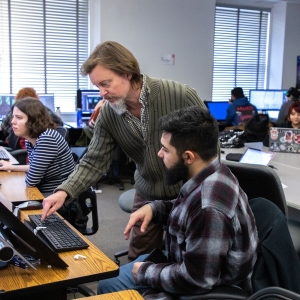
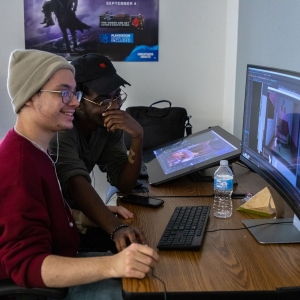
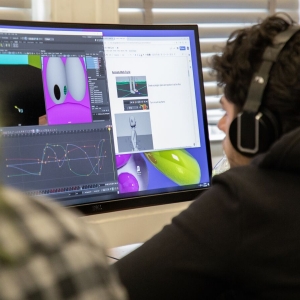
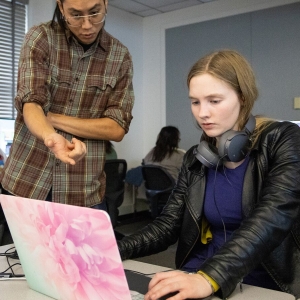
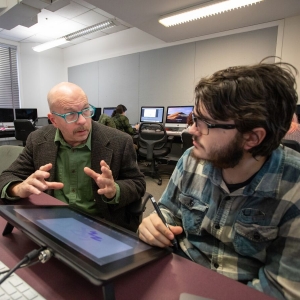
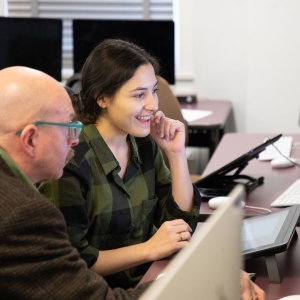
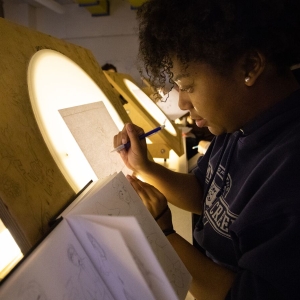
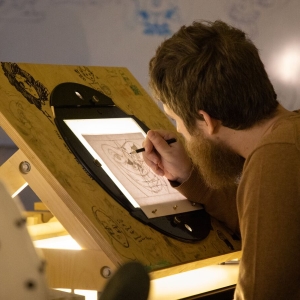
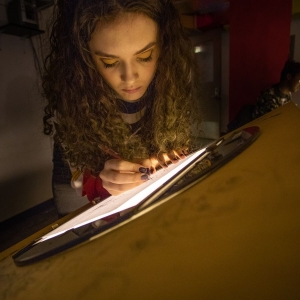
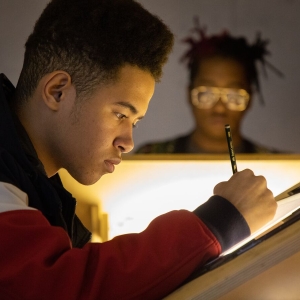
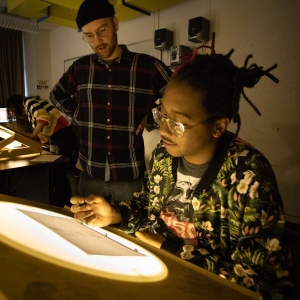

University of the Arts students participated in Who Wants to Live Forever, a video collaboration with college students from four other continents, that was released in time for the 26th UN Climate Change Conference, held Oct. 31 – Nov. 12, 2021, in Glasgow, Scotland. Throughout 2021, participating students collaborated with director and videographer Matteo Valenti—who created the video in conjunction with Brian May. In addition to being the renowned rock band Queen’s guitarist, May is co-founder of the Save Me Trust, a nonprofit organization that works to protect and advocate for wild animals.
UArts was the only school in the U.S. to represent North America. The other participating colleges and universities included IED European Institute of Design, Milan, which represented Europe; Creatures Animation Hub, Kampala, which portrayed Africa; Griffith Film School, Brisbane, which depicted oceania; Tokyo Zokei University, which produced the Asia component; and Núcleo de Animação PUC, Rio de Janeiro, which addressed South America. The students’ animation was set to “Who Wants to Live Forever,” a 1986 Queen song.
The UArts Animation students who participated were J Cella BFA ’21, Corrine Distefano BFA ’21, Kaenan Ericksen BFA ’21, Ebin Huston BFA ’21, Guisa Longasa BFA ’21, Reese MacDonald BFA ’21, Wren Martin ’22, Trevor McKeon BFA ’21, Naja Meeks ’21, Brandon Perez BFA ’21, Atesh Sakaraya BFA ’21, Sage Salvatore BFA ’21, Travis Swisher BFA ’21 and Angela Visconti BFA ’21.
The North America section addresses pollution of water and land and deforestation and its effect on animals.
At the time of the project’s inception, Karl Staven was serving as the Animation program’s director. He wrote about the project: “A random email arrived in my inbox offering up the potential opportunity to collaborate on a film with other universities around the world.” Staven jumped on the opportunity, incorporating it into UArts’ Client Animation class, in which students work with nonprofits to learn how to communicate with clients and create content in collaboration with them.
This incredible video, created by students from five continents, shows the devastation our precious planet faces. - Brian May, co-founder, Save Me Trust, and guitarist, Queen
Staven also wrote, “Students arrived on the first day with a 45-second clip from the music in hand and were given the task to generate ideas, which would be run through Matteo to finalize an approach. We formed two groups, water and land, led by students, who then saw through the realization and completion of the project.”
Angela Visconti, then a senior, was chosen by her peers to supervise the plastic and oil pollution section of the project. “It’s challenging being a supervisor, but it’s rewarding,” she said in 2020. “It’s really nice that we get to experience communicating as a team and as fellow animators. It’s great for confidence.”
UArts Animation students also joined a private, working Facebook group, so students could share their work across continents as it evolved.
In a press release distributed at the outset of the 26th UN Climate Change Conference, Brian May and Save Me Trust co-founder Anne Brummer stated, “This incredible video, created by students from five continents, shows the devastation our precious planet faces. … World leaders are meeting at the UN Climate Change Conference 2022 (Cop26), and it is essential they take heed and take actions now.”
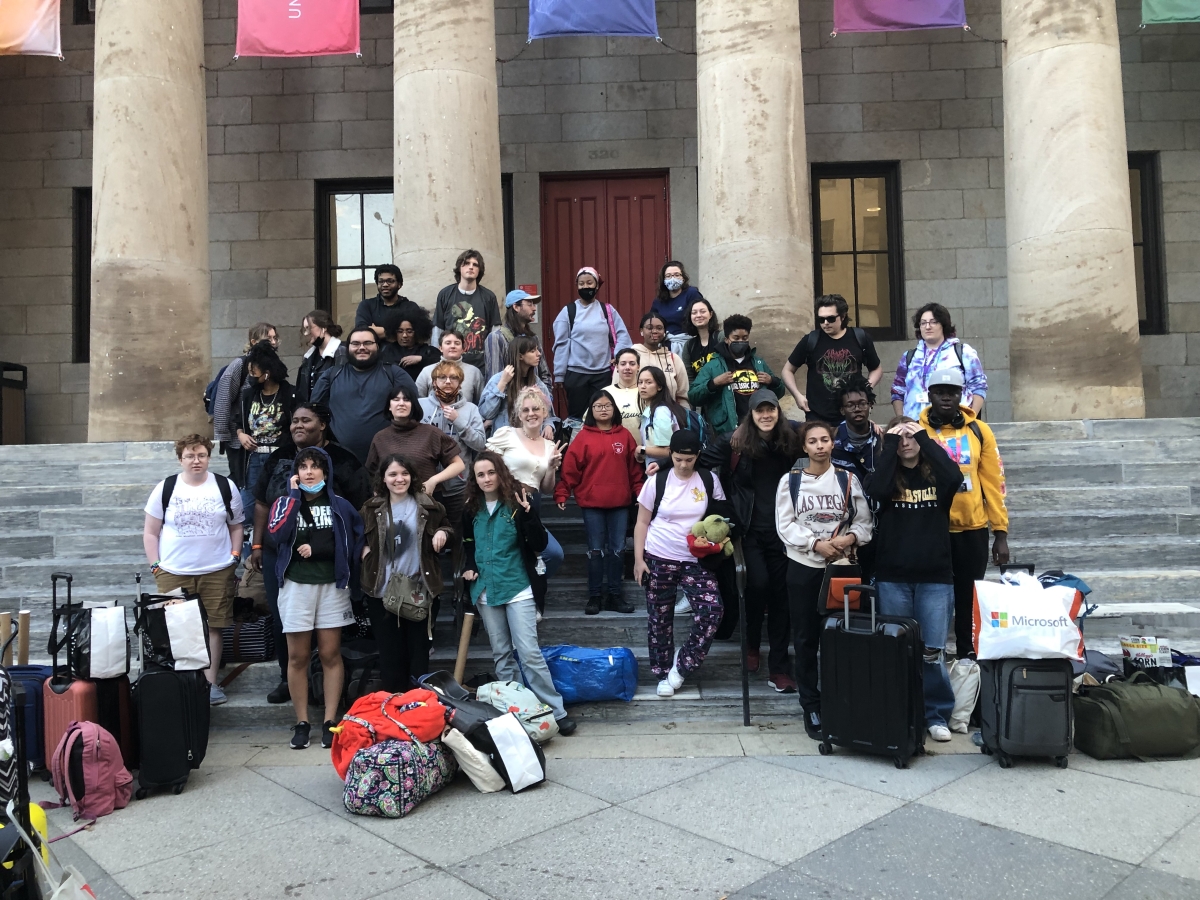
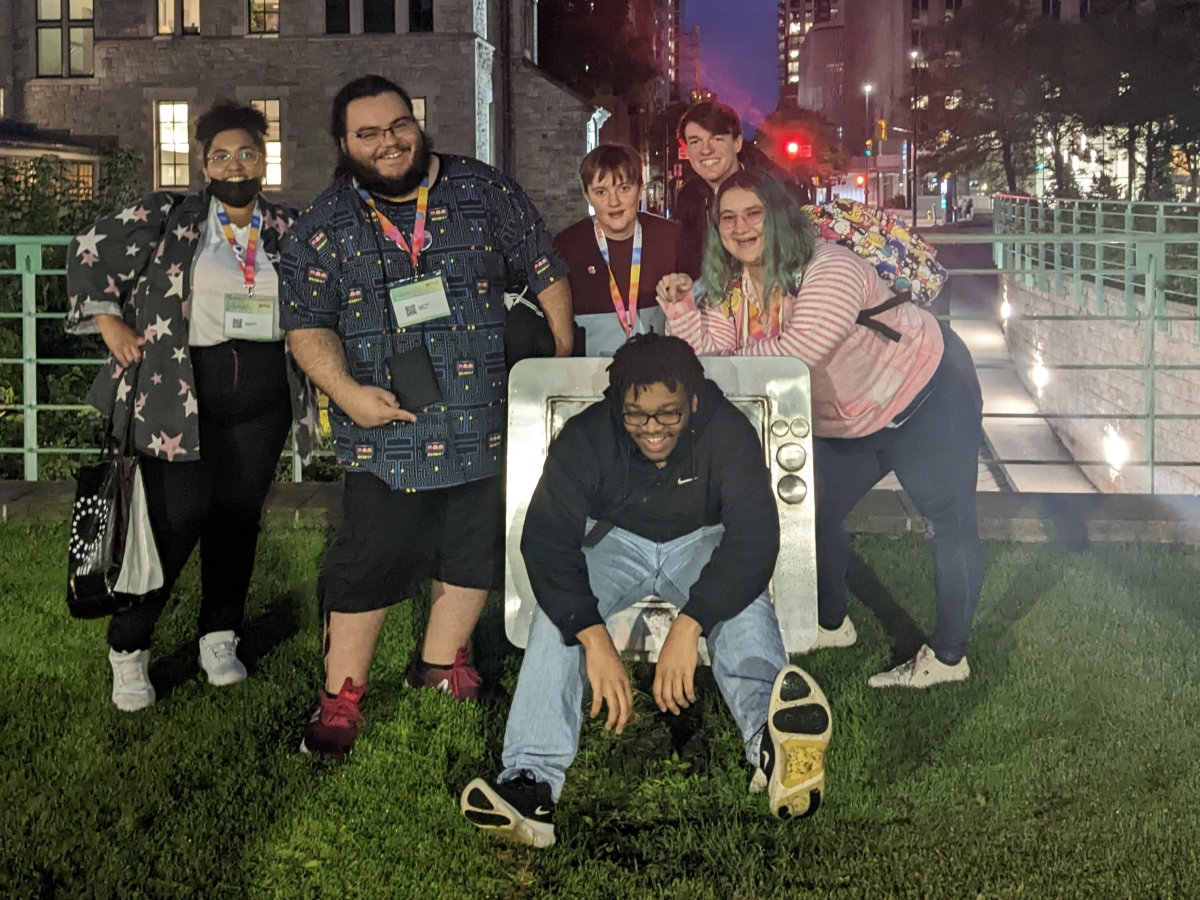

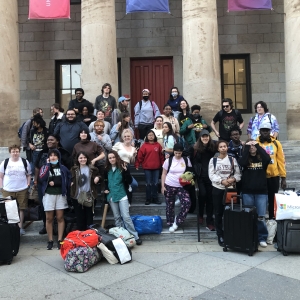


Witness what it is like to work in a studio and talk to professionals in the field during class visits and during our annual Ottawa International Animation Festival trip and our Los Angeles Experience. Students will meet directors, recruiters, and other artists from around the globe.
Curriculum
Sample Courses in the Animation Major
UArts’ Animation BFA degree program supports 2D hand-drawn, 3D computer, stop motion and any animation techniques you can imagine.
After completing the Animation program, students will be able to
- Develop the ability to verbalize and bring to life a strong personal artistic vision, combining informed meaningful content creation with unique visual approaches to produce engaging sound/image work.
- Master both traditional and digital animation skills and concepts; using motion and time understanding with drawn, stop-motion and computer-generated creative practices.
- Demonstrate critical and analytical thought based in art history, and be able to communicate this using written, visual, oral, web or hybrid means.
- Learn to collaborate with artists, peers and professionals to effectively manage time in a working relationship.
Fall: 15 credits
ANIM*111 Principles of Animation (3 credits)
ANIM*112 Introduction to Stop Motion Animation (3 credits)
DRAW*111 Drawing: Natural Forms and the Human Figure (3 credits)
Discipline History Choice (3 credits)
Example:
AHST*101 Art, Design & Moving Image I
Writing 1 Placement (3 credits)
Spring: 15 credits
ANIM*131 Introduction to 2D Computer Animation (3 credits)
ANIM*134 Introduction to 3D Animation (3 credits)
IMAG*102 Color (3 credits)
WFTV*145 Character (3 credits)
Writing 2 Placement (3 credits)
Fall: 15 credits
ANIM*225 Storyboarding (3 credits)
Focus Choice (6 credits)
Example:
ANIM*211 Character Design
FILM*124 Video Production
Critical Studies (6 credits)
Spring: 15 credits
ANIM*213 Sophomore Animation Piece (3 credits)
Focus Choice (3 credits)
Example:
ILUS*285 Drawing for Animators
Discipline History Choice (3 credits)
Example:
FMST*251 History of Narrative Cinema I
Critical Studies (6 credits)
Fall: 15 credits
ANIM*312 Visual Development for Animation (3 credits)
Focus Choice (6 credits)
Example:
ANIM*228 Intermediate 2D Animation
FILM*204 Sound Design
Critical Studies (6 credits)
Spring: 15 credits
ANIM*302 Junior Animation Piece (3 credits)
ANIM*381 Animation Professional Practices (3 credits)
ANIM*341 History of Animation (3 credits)
Focus Choice (3 credits)
Example:
ANIM*345 Visual Effects Compositing
General Elective (3 credits)
Fall: 15 credits
ANIM*401 Animation Thesis I (3 credits)
ANIM*406 Client Animation Project or ANIM*499 Animation Internship (3 credits)
Critical Studies (3 credits)
General Electives (6 credits)
Spring: 15 credits
ANIM*402 Animation Thesis II (3 credits)
Critical Studies (3 credits)
General Electives (9 credits)
Explore the Full Curriculum

Student Spotlight
Faculty Spotlight
Alumni Spotlight
Our alumni work on blockbuster special-effects films, animated TV series, commercials, video games and more in a variety of roles, from director to storyboard artist.
Careers
Animation students begin developing their first demo reel during their freshman year and revise that reel throughout their academic career. As a part of the Animation Professional Practices class in the spring of their junior year, students post their reels to their own portfolio websites that are developed in conjunction with their personal visual identity, which is also deployed on business cards, resumes, and other materials.
Professional Practices also visits studios in New York City and Philadelphia to give students the opportunity to meet professionals and tour facilities. Guest speakers and alumni visit on a regular basis to give lectures and advice.
Students also have the opportunity to intern at a professional studio. Organizations that have hosted interns in the past include Augenblick Studios, Sesame Workshop and Stretch Films Inc.
Companies in and around Philadelphia that have hired BFA in Animation alumni include Alkemy X, Center City Film & Video, and unPOP.
Nationally, our alumni have been hired by Warner Bros., Cartoon Network, Disney, Nickelodeon, Bento Box, Augenblick, Titmouse.
As the industry continues to grow, graduates find themselves in a variety of roles. Career options for Animation majors include:
Storyboard Artist
Storyboard Revisionist
2D Animator
3D Animator
Stop Motion Animator
Effects Animator
Assistant Animator
Motion Graphics Designer
Art Director
Background Designer/Layout Artist
Background Painter
Color Stylist
Character Designer
Prop Designer
Animatic Editor
Editor
Compositor
Director
Production Assistant
Producer
Set Designer
Puppet Fabricator
Cinematographer
3D Lighting Designer
3D Model and Set Builder
3D Modeler
3D Character Rigger
3D Texturer
Scientific Animator
Forensic Animator
Architectural Animator
The animation artist’s skills translate well to other visual fields. UArts Animation Alumni are also working in live action film and television, game design, graphic design, and illustration. Animation students also learn to pitch ideas, collaborate, and communicate with teams every day, which are valuable skills in many professional environments.
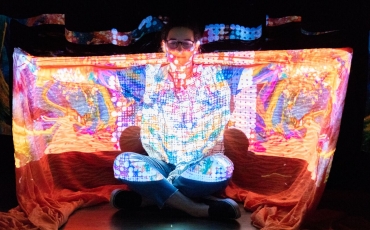
Center for Immersive Media
UArts’ Center for Immersive Media (CIM) is a 5,600-square-foot facility dedicated to exploring the fields of virtual and mixed reality, performance motion-capture, and human-computer interaction.
The space includes
-
Optical motion capture system for full body performance capture and location-based VR applications;
-
A four-channel audio system, multiple video projectors and lighting, as well as a control station;
-
16-station computing classroom with PCs optimized for real-time graphics rendering; and
-
Two large project rooms with ceiling grids for development of installations and virtual environments.
Your Animation Application Portfolio
You do not need previous animation experience to apply to UArts Animation. If you do have animated work, you may include your strongest examples in your portfolio.
When compiling your application portfolio, show us your enthusiasm for learning through examples of your previous work which may include:
- Observational figure studies of the model
- Gesture poses (short duration quick sketches)
- Longer poses (include face, hands and feet)
- Observational life drawings
- Sketches of people and animals on location in parks, zoos, cafés, etc.
- Interior and exterior environment drawings that capture the sense of a specific space
- Drawings with opinions on the subject: intentional exaggeration, stylization, or abstraction, and drawings that illustrate an exploration of form, shape, color, and mood.
- Imaginative Drawings (any of the below)
- Sketchbook pages to show your range, experiments, and studies
- Original character, creature, prop, or vehicle designs
- Original visual development work of fictional locations
- Visual Storytelling (any of the below)
- Character driven comics (short 1-4 panel comics, one or multi-page comics, genre comics, slice-of-life comics, autobio comics)
- Sequential illustrations, or single illustrations that have a strong narrative sensibility (like a picture book)
- Storyboards or thumbnail storyboard examples (a sequential plan for a moving picture)
- Time-based Media (any of the below)
- Animation examples (rough or cleaned up are both OK)
- Video turntable rotations of 3D models
- Video flip-throughs of sketchbooks or studies
- Live-action video with a visual direction and awareness of staging, composition and editing
- Multimedia video showcasing compositing, collage, or experimental film techniques
- Dimensional Sculptural Work (any of the below)
- Photos or videos of models, sets, sculptures, puppets, ceramics
How to Apply
UArts offers recommended priority deadlines; students who apply and submit all required materials by the priority deadline will receive first consideration for scholarship aid from UArts. Applications received after the priority deadline will be reviewed on a rolling, space-available basis.
International students requiring an F-1 visa for study in the U.S. might be subject to earlier deadlines to provide time for completion of the visa process. Contact Admissions for guidance if you are an international student who wishes to apply after the priority deadline.
Spring 2024 priority deadline: Oct. 15, 2023
Fall 2024 priority deadline: Feb 15, 2024
We cannot accept spring 2024 applications after Jan. 8, 2024, and cannot accept fall 2024 applications after Aug. 16, 2024.
The following materials are required for your application.
Start or resume your application.
-
The application includes two required short-answer questions: What excites you about UArts? What inspires you?
-
If you qualify for a fee waiver from NACAC, CollegeBoard, UArts or another source, indicate that on your application. If the cost of the application fee is a barrier, contact Admissions to request a fee waiver code.
-
Official transcripts must be sent directly from your school by mail, email or a secure electronic document-delivery service.
-
International transcript requirements
-
If you’ve attended high school outside the U.S., read the additional guidelines for international transcripts.
-
-
Transfer student transcript requirements
-
High school transcripts may be waived for transfer applicants who have completed a minimum of 24 credits of college-level coursework, including a minimum of 18 academic, non-studio credits.
-
Official college transcript(s)
-
Official transcripts must be sent directly from all the colleges you have attended by mail, email or a secure electronic document-delivery service.
-
If you’ve attended college outside the U.S., you are required to have an official course-by-course evaluation of your college coursework sent to UArts. Additional guidelines for international transcripts are available.
-
-
A portfolio is required for all Art, Design, Film and Writing programs. Your portfolio may be uploaded during the application process or via your applicant status portal after submission. You must confirm when your submission is complete via the linked electronic form before your portfolio can be reviewed for admission.
-
Letters of recommendation from teachers or mentors are optional and may be submitted by the recommender via email to undergradcredentials@uarts.edu or by your high school through a secure electronic document-delivery service.
Apply Now
Scholarships & Financial Aid
UArts recognizes the extraordinary talent of our students through a range of merit-based scholarships. All applicants are automatically considered for such scholarships—no special application is necessary.
Nearly 80 percent of UArts’ undergraduate students enrolled on a full-time basis are eligible for some type of need-based aid. Additionally, some scholarship opportunities take need-based criteria into account. All students who are U.S. citizens or eligible non-citizens and are enrolled in a degree program are encouraged to apply by completing the Free Application for Federal Student Aid (FAFSA).
We encourage students to complete the FAFSA by March 15, if possible.
Many students and families have encountered technical challenges while trying to complete the FAFSA this year. If this is the case for you, continue to utilize the FAFSA support resources until your issue is resolved. UArts will ensure that all admitted students who file the FAFSA are eligible for the same institutional funding to support your costs.
FAQ
Frequently asked questions about the Animation BFA program
With an animation degree, you can pursue careers in various fields such as film, television, gaming, advertising, and digital media, working as an animator, character designer, storyboard artist, or visual effects artist, among others.
According to the U.S. Bureau of Labor Statistics, the employment of multimedia artists and animators is projected to grow 4 percent from 2019 to 2029, which is about as fast as the average for all occupations. Obtaining a degree is an important piece in entering this growing field, as you will be provided with many professional opportunities such as internships and networking events in addition to learning all of the important skills and tools that will be needed in the workforce.
About the School of Film
University of the Arts’ School of Film strongly believes in creative collaboration, self-expression and professional preparation through its programs in Animation, Film, Film and Animation, Film Design, Game Art, and Screenwriting.
It also offers minors in
- Animation,
- Film,
- Film and Media Studies,
- Game Art, and
- Screenwriting.
The School of Film prepares students for careers in the film and entertainment industries via internships, networking events and an on-campus series with professional alumni. Our graduates become directors, editors, animators, game artists, cinematographers, art directors and screenwriters, working in the region and around the world.
Get Started
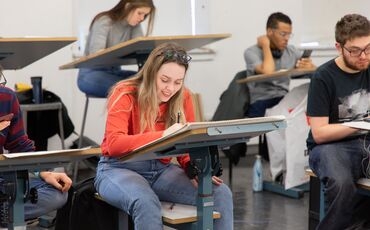
Apply to UArts
Begin your application today. Our admissions team will help you throughout the process.
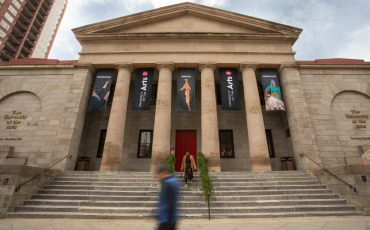
See UArts for yourself
The best way to get to know UArts is by visiting our campus in person. Come see a show, visit a gallery, and get to know the neighborhood.

Not sure where to start?
We're glad you want to learn more. Our admissions team is happy to send additional information about our school.

